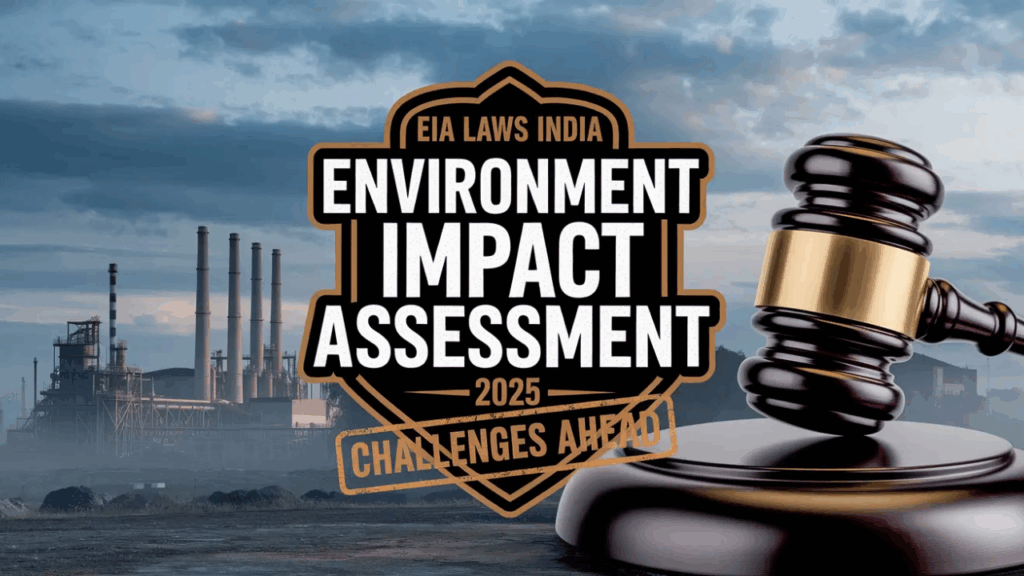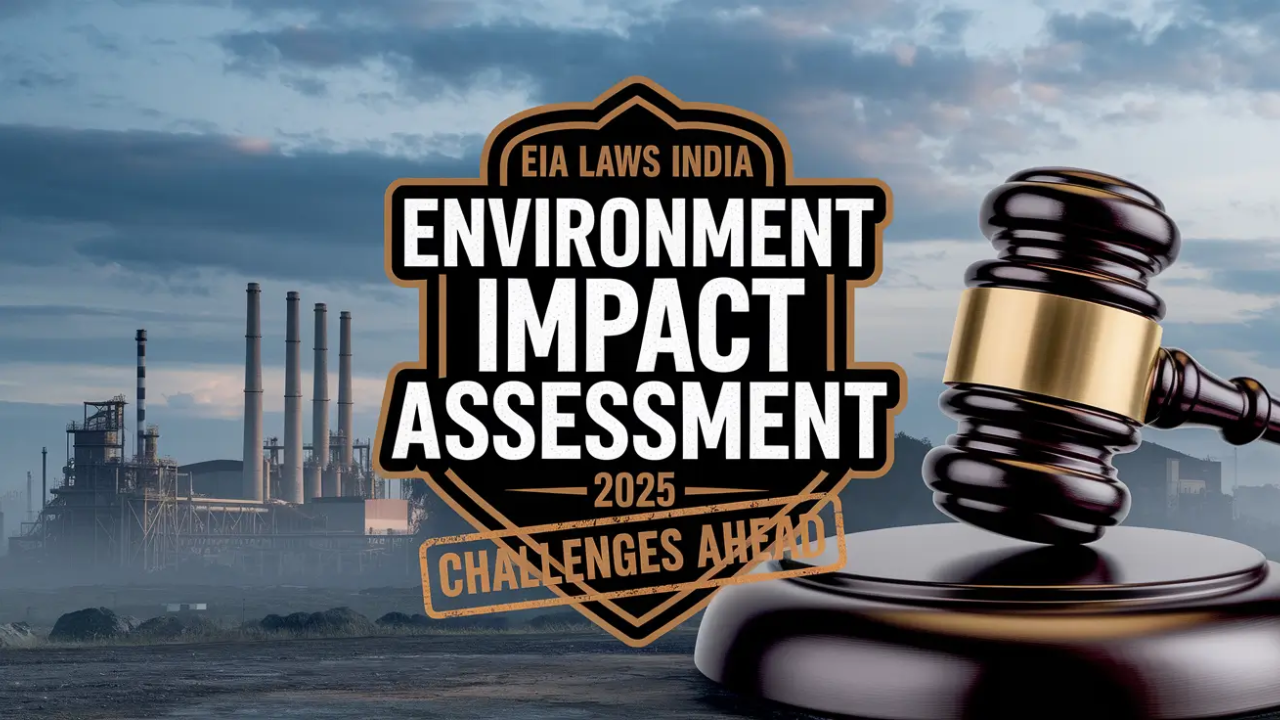
Environmental Impact Assessment (EIA) is a crucial tool for balancing development with environmental sustainability. It evaluates the potential environmental, social, and economic consequences of proposed projects before granting approvals. In India, EIA was introduced in 1978 for river valley projects and later made mandatory under the Environment Protection Act, 1986. Despite its importance, implementation of EIA in India has faced several challenges, raising concerns about its effectiveness in ensuring sustainable development.
Importance of EIA in India
EIA plays a vital role in India’s environmental governance by:
- Identifying and mitigating adverse impacts of industrial, mining, infrastructure, and power projects.
- Promoting sustainable decision-making.
- Ensuring public participation in environmental protection.
- Complying with international obligations such as the Rio Declaration and Paris Agreement.
Key Challenges in Implementing EIA in India
1. Procedural and Institutional Weaknesses
- Overlapping jurisdictions between central and state authorities often create delays and inconsistencies.
- Limited coordination between Pollution Control Boards, Expert Committees, and ministries hampers effective monitoring.
- Lack of trained professionals and scientific expertise reduces the quality of assessments.
2. Quality of Environmental Impact Reports
- Many reports are criticized for being copy-paste documents with outdated or inadequate data.
- Consultants often prioritize the interests of project developers, leading to biased outcomes.
- Cumulative impacts of multiple projects in the same region are rarely considered.
3. Public Participation and Transparency
- Public hearings, a mandatory step, are often poorly conducted, with limited awareness among local communities.
- Language barriers, lack of accessibility to EIA reports, and tokenistic consultations undermine transparency.
- In many cases, local stakeholders are excluded from meaningful decision-making.
4. Political and Economic Pressures
- Fast-track clearances are often granted to large projects, undermining the credibility of the process.
- Pressure from industries and political groups leads to diluted standards and weak compliance.
- Environmental concerns are often sidelined in favor of economic growth and infrastructure development.
5. Weak Monitoring and Compliance
- Once clearances are granted, follow-up monitoring is weak, with violations often going unchecked.
- Absence of strong penalty mechanisms reduces accountability of project developers.
- Lack of independent regulatory bodies results in poor enforcement of conditions imposed during approval.
6. Frequent Policy Amendments and Dilution
- Draft notifications such as the EIA Notification, 2020 have been criticized for reducing the scope of public participation.
- Increasing exemptions for projects (like small mining or linear infrastructure) weaken the spirit of EIA.
- Frequent policy shifts create uncertainty and reduce institutional stability.
Comparative Insights
Compared to global best practices, India’s EIA system struggles with enforcement. Countries like the US and Australia have independent environmental agencies with strict compliance mechanisms, while India’s process is often criticized as clearance-oriented rather than genuinely impact-oriented.
The Way Forward
To strengthen EIA in India, several reforms are essential:
- Enhancing institutional capacity and expertise at both central and state levels.
- Ensuring independent and scientific preparation of EIA reports.
- Strengthening transparency by making all documents accessible in local languages.
- Improving post-clearance monitoring and imposing stricter penalties for violations.
- Encouraging regional and cumulative impact assessments for long-term sustainability.
Overview Table
| Challenge Area | Specific Issues | Impact on EIA Effectiveness |
|---|---|---|
| Institutional Weaknesses | Overlapping jurisdictions, lack of expertise | Delays, inconsistent decisions |
| Quality of Reports | Outdated data, biased assessments | Poor prediction of impacts |
| Public Participation | Token hearings, limited awareness | Exclusion of communities |
| Political & Economic Pressure | Fast-track clearances, diluted standards | Environment compromised for growth |
| Monitoring & Compliance | Weak follow-up, lack of penalties | Violations remain unchecked |
| Policy Dilution | Frequent exemptions, reduced participation | Weakens credibility of the process |
FAQs
Q1. Why is EIA important in India?
It ensures that development projects balance economic growth with environmental protection by assessing potential impacts beforehand.
Q2. What is the biggest challenge in EIA implementation?
The poor quality of reports and weak monitoring mechanisms remain the biggest hurdles.
Q3. How can EIA in India be strengthened?
By improving transparency, ensuring independent assessments, and enhancing post-clearance monitoring with stricter penalties.

